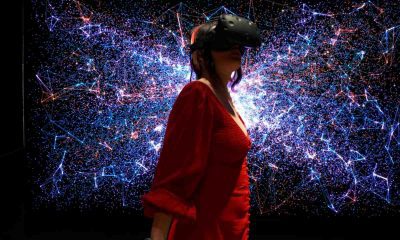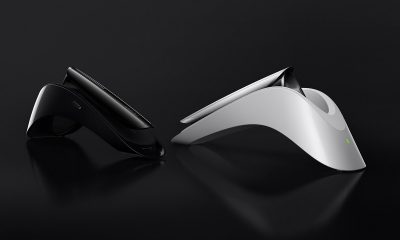Technology
Mintlify ventures into AI for more efficient documentation tasks
Published
3 years agoon

Mintlify is a world-class documentation platform that lets users gain documentation codes as they scale with a priority in quality. The platform promises to connect with your existing system in less than three minutes. Many other features also come with your subscription: easy integration, adaptable and customizable workflows, incorrect documentation code detection, team and platform syncing, and more.
Mintlify is planning to tap into AI to generate code documentation automatically. Is this the next-level documentation platform that developers have been waiting for?
Coders and developers might be on the lookout for this promising software that automates documentation tasks from code. Mintlify has raised over $2.8 million in seed funding. Bain Capital Ventures leads this seed round of funding with the collaboration of Quinn Slack and TwentyTwo Ventures.
Mintlify CEO Han Wang claims that this funding will be invested in the company’s product development and workforce augmentation by the end of the year. The company aims to multiply Mintlify’s three-person team by two folds by the end of the year.
Han Wang and Hahnbee Lee founded Mintlify in 2021 in Ithaca, New York. These software engineers have also founded several software programs in the previous years. Han Wang co-founded a startup that created a cloud-based monitoring program for cows called Foodful. He also founded Pe*ple, which is an online customer community channel. Tribe, later on, acquired Foodful in early 2021.
On the other hand, Lee also co-founded Pe*ple before he jumped on Duolingo as the company’s engineer.
How it started
The geniuses behind Mintlify wanted to give users high-quality and efficient documentation in software development. The idea arose after having experienced incomplete or low-quality documentation in software development.
A GitHub survey showed that 93 percent of developers have also experienced the same thing. It claims that outdated or incomplete documentation has become a significant problem for most developers.
Mintlify’s mission
Mintlify’s mission is to use technology by integrating natural language processing and web scraping to create documentation to explain it and read codes. Overall, the company aims to cater to users and developers who struggle with documentation by providing auto-generated documentation.
Although Wang didn’t disclose all information about Mintlify’s technical features, he claims that automating documentation from code might be a possible feature that users will enjoy from the platform. The company aims to compete against other platforms offering the same approach, such as Documatic, an AI-powered platform that automatically produces explanations and changes logs from code.
Other features of Mintlify will include scans for stale documentation, integration with existing systems, detection of user engagement with the documentation in readability enhancement, and more.
Better than its competitors
Wang also claims that Mintlify will be better than its competitors by providing high-quality results.
Wang said, “Mintlify’s mission is to solve documentation rot by developing continuous documentation into a standard practice for software teams. [W]hen engineering managers are actively seeking solutions for better documentation practices … that’s when we step in.”
Wang also added that Mintlify’s free plan users have also grown by numbers. He claims it’s been increasing by 20 percent weekly since launching in January. And now that the number of active accounts is around 6,000, Mintlify is now banking on offering premium accounts to enterprise users.
You may like
Technology
Oppo Air Glass: A Ground-Breaking AR Technology Experiment?
Published
14 hours agoon
August 14, 2025
On March 3, 2022, Oppo launched its first-generation Air Glass, a monocle-style Augmented Reality (AR) device designed to pair with Oppo smartphones. The Air Glass featured a lightweight design (just 30 grams), a microLED display with up to 1400 nits brightness, and supported functions like navigation, real-time translation, calendar reminders, and teleprompter mode. Despite its futuristic appeal, Oppo released it only in limited quantities within China, with no plans for international availability. Priced at 4,999 yuan (around $745), the Air Glass was more of a conceptual showcase than a consumer-ready product, aimed at demonstrating Oppo’s vision for assisted reality.
Main Features
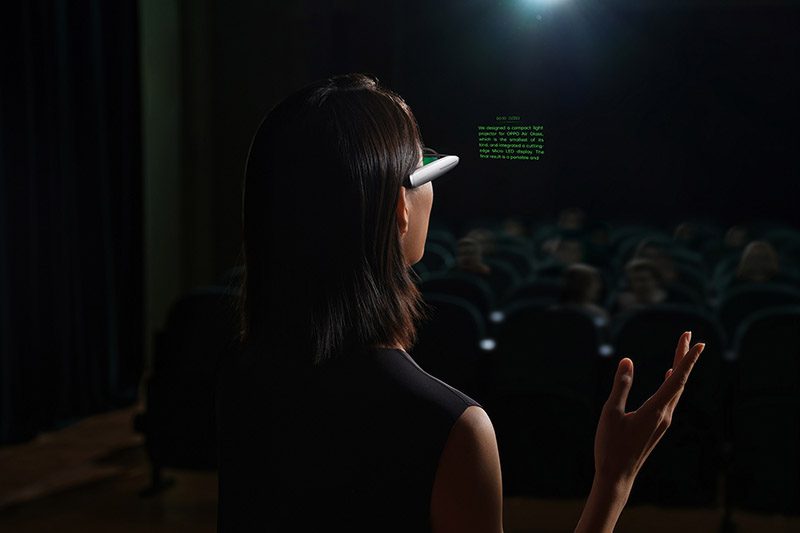
While many AR experiments focus on pushing purely technical capability, the Oppo Air Glass accepts some clear hardware limitations to play with an exciting form factor. Adi Robertson of The Verge tested a set of glasses and a matching smartphone. Robertson found a design idea so obvious and still needs more improvement.
Augment Reality is a spectrum, and the Air Glass is considered a “simple notification machine” aspect. It differs from those realistic holograms in products such as Microsoft HoloLens.
Below are some of the noticeable features of Oppo Air Glass:
- The device is a single lens with a microLED display. The display can have a staggering peak brightness of up to 1400 nits!
- The powerful Spark Micro Projector shows all the dual Sapphire crystal glass information.
- Oppo Air Glass is powered by Qualcomm’s Snapdragon Wear 4100 SoC.
- This innovative device is equipped with Wi-Fi, Bluetooth, and GPS with in-built speakers and microphone.
- This device can turn into a mini teleprompter. Since the teleprompter displays any text you want, you can use it more creatively.
- Currently, automatic translation is still limited to English and Chinese.
When you pair the smart device over Bluetooth with a China-only Oppo smartphone, you’ll see a green heads-up display that covers a tiny but significant portion of your vision. But Robertson said she was amazed by the assumption behind Oppo’s design. It is because it’s a solid idea to offer lots of style options while mitigating the usual AR creepiness.
Nine years ago, Google Glass conducted a similar experiment. They invented the expensive camera and projection system and let them wear them at all times. But it looked awkward.
Other Specs and Features
Oppo’s AR interface relies on widget-like applications in the form of “cards,” which the wearer can manage from the paired smartphone application. It can be controlled using a touchpad on its side. Hand gestures are also supported, as is the peculiar feature of using the motion of the head to control it. Moreover, voice control is also incorporated.
Meanwhile, the Air Glass looks like an earbud for your eyes. Oppo Air Glass weighs only 30 grams, making it incredibly lightweight to wear. Users can wear it over their frames, but only two specific sizes exist.
It’s a product that takes people’s concerns about privacy and distraction seriously instead of trying to hide what they’re worried about inside a smaller package. It also helps that this version of Air Glass doesn’t have to include a camera. But Oppo says it doesn’t rule the option out for future versions.
“Unfortunately, after my first few hours with the glasses, I became slightly motion-sick and developed a headache within minutes of putting them on. The discomfort seemed to improve over time, but my eyes still feel strained after wearing them”, says Robertson.
Since then, Oppo has continued refining its AR ambitions, culminating in the Air Glass 3 prototype revealed in 2024, which integrates AI capabilities and a more natural eyewear form factor.
Technology
Augmented Reality Contact Lenses: A Breakthrough in AR
Published
14 hours agoon
August 14, 2025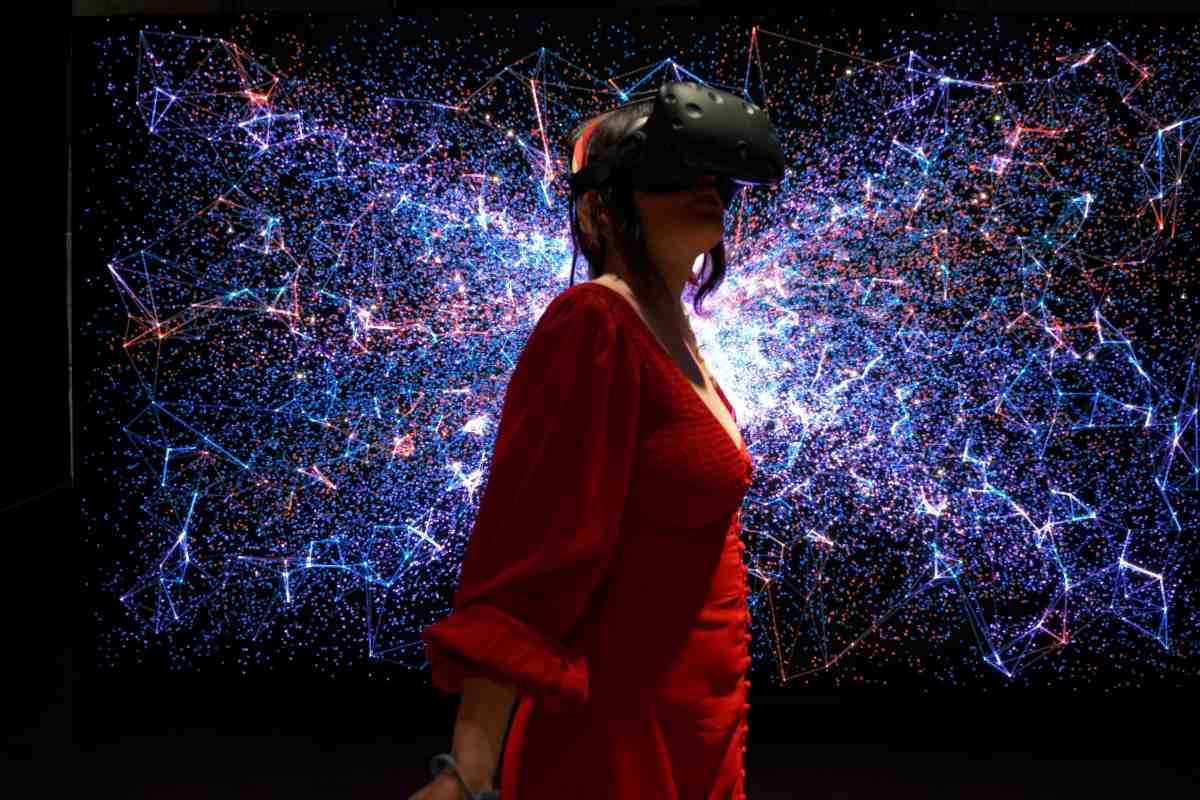
About three decades ago, scientists at Air Force Research Laboratory (AFRL) worked with a group of human volunteers to try something never before done. They were tested for a prototype augmented reality system that allows them to engage with virtual objects that will be merged with the real world. The test subjects were asked to perform several tasks, including climbing an exoskeleton, pressing their faces against a vision system, and interacting manually with a blend of real and virtual objects.
This system cost around $1 million to build, but had become a resounding success. It only filled the room by half, demonstrating for the first time that AR technology works. It has been proven to enhance human performance in real-world functions.
Then, a few years ago, the breakthrough was achieved in a research lab at Mojo Vision in Saratoga, California. It featured the achievements of the field over the past decades. This time, it’s about an augmented reality contact lens. The research was a genuine test of an AR contact lens that the users wear directly on the eyes.
Big in Power, Small in Space
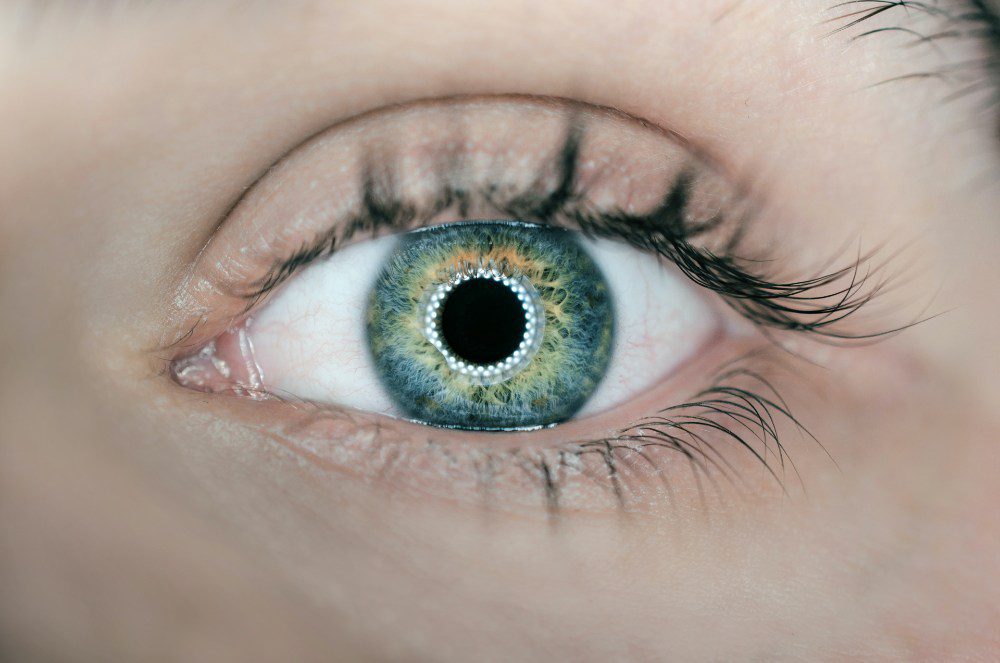
Augmented reality contact lenses are a challenging endeavor, according to experts. People generally focus on the display technology when in fact, it is more than that. Putting a high-resolution display on a tiny, transparent lens is no small feat, but it is the most straightforward task.
The more complicated part was making the tiny lens sit comfortably on the human eye. It also has to communicate wirelessly with the external devices without any kind of string attached. However hard it was, this was the exact result that Mojo Vision accomplished.
Augmented Reality Contact Lenses
According to Mojo Vision, the contact lens called Mojo Lens has a 14,000 pixel-per-inch microLED display with a pixel pitch of 1.8 microns. Compared side-by-side with an iPhone 13, the Mojo Lens has 30 times its pixel density. The iPhone only has 460 pixels per inch with its Super Retina XDR Display.
Furthermore, the lens has an ARM processor, a 5GHz radio transmitter, an accelerometer, a gyroscope, and a magnetometer for eye movement monitoring. All these technologies will sit on the human eye.
But these aren’t the most intricate parts yet. The biggest challenge was how they would incorporate power into the lenses. Mojo Vision tells us that the Mojo Lens has medical-grade micro batteries. The company hasn’t given out details of the battery life yet, but they let us know that they aim to provide power management that enables users to wear the lenses throughout the day.
Augmented Reality is the Future
Indeed, this is a promising prospect, but one that will take more time to be fully developed. Making it as low-cost as possible for everyone to enjoy will be a long journey, but it is where it is headed. It is predicted that AR eyewear, from glasses to contacts, will take the place of mobile phones as the main interface of digital content within the next decade.
This also means that AR technology will impact society significantly. It will change digital assets into seamless features of our physical surroundings. The past decades have shown us that life with augmented reality will become mainstream. People will soon get fitted for new contact lenses when they sign up for a mobile subscription.
In addition, given the impressive innovations in engineering, it is reasonable to expect that AR will replace mobile phones as the new platform of our daily lives in the years to come. Currently, the prospects are still a matter of suggestions, and only time can tell.
And for other stories and news, read more here at Owner’s Mag!
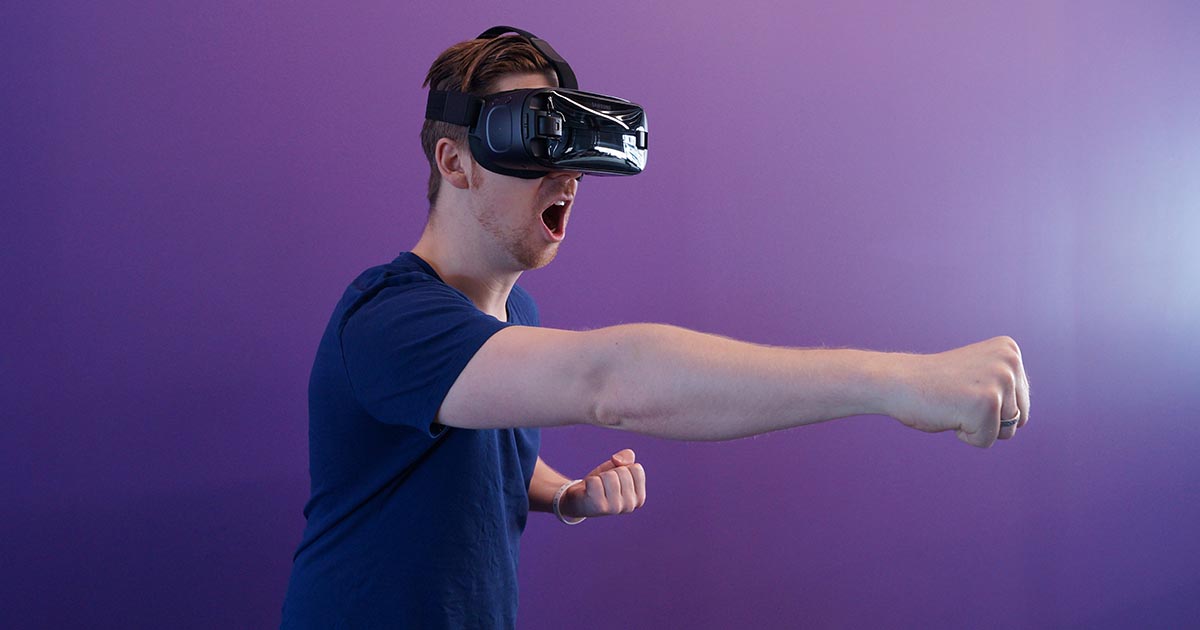
Ever felt dizzy or nauseous after using your laptop or smartphone? These could be signs of cybersickness. But what is cybersickness? Angelica Jasper, a Ph.D. student in Human-Computer Interaction at Iowa State University, explains its symptoms and how to cope with it
What is Cybersickness?
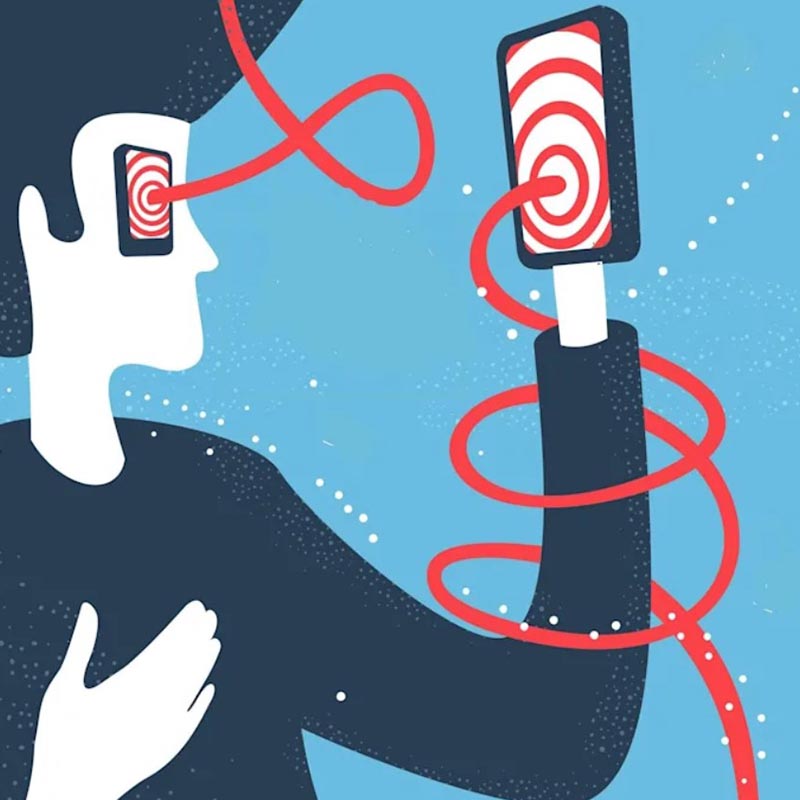
Cybersickness is a cluster of symptoms during the absence of physical motion, akin to motion sickness. These symptoms are categorized into nausea, oculomotor issues, and general disorientation. Oculomotor symptoms, including eye strain, fatigue, and headaches, involve stressing the nerve that controls eye movement. Disorientation can manifest as dizziness and vertigo. Meanwhile, several cybersickness symptoms overlap categories, such as difficulty concentrating and blurred vision. These issues can persist for several hours and may affect sleep quality.
People can experience the symptoms when using daily devices like computers, phones, and TV. In 2013, Apple introduced a parallax effect on iPhone lock screens that made the background image seem like it floated when a user moved their phone around. But, many people found it extremely uncomfortable. Surprisingly, the reason behind the discomfort is that it triggered cybersickness symptoms.
However, some researchers have different views about why people experience cybersickness. For instance, sensory conflict theory assumes that it is due to a mismatch of information sensed by our body parts that regulate vision and balance. Using every device can cause this conflict between visual perception and physical experience.
Cybersickness in Virtual and Augmented Reality
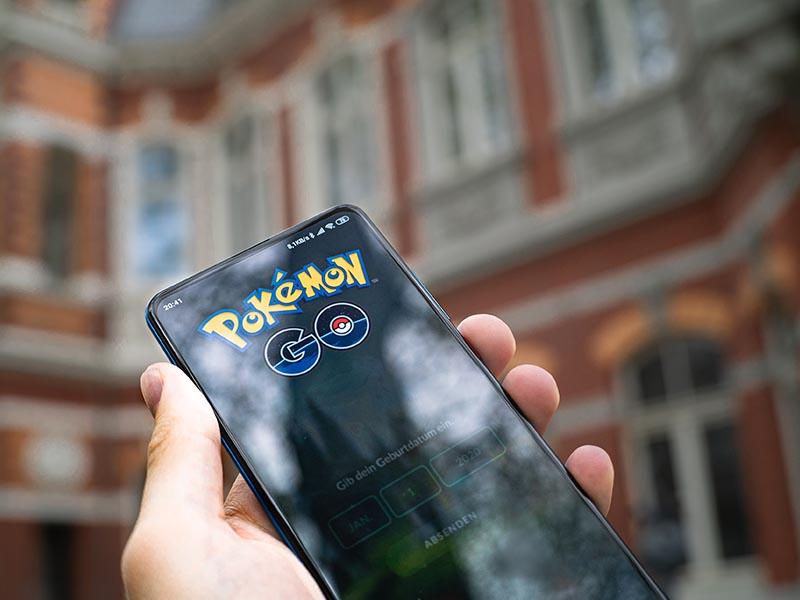
Cybersickness symptoms are perceived to become more intense with virtual reality (VR) and augmented reality (AR).
VR is widely available through popular gaming platforms like Facebook’s Oculus devices and Sony PlayStation VR. VR can trigger severe levels of nausea that increase with the duration of use. Also, this can cause some applications and games unusable for many individuals.
AR, on the other hand, are head-mounted devices that allow the user to see what’s in front of him. This includes games like Pokémon Go, accessible on your phone or tablet. Prolonged use of AR devices can result in more severe oculomotor fatigue.
A rise in the popularity of owning AR and VR devices can trigger an increase in cybersickness symptoms. Research and Markets estimate that adopting these technologies for various purposes may grow over 60 percent and reach USD 905.71 billion by 2027.
Cybersickness Symptoms Is Dangerous
While cybersickness symptoms may initially appear mild, they can have enduring effects over time. This may not seem like a big issue initially, but lingering symptoms may affect your ability to function well and could be dangerous. Symptoms such as severe headache, eye strain, or dizziness could affect your coordination and attention. If these symptoms persist while driving, it could lead to a car accident.
How to Deal With Cybersickness

If you are experiencing cybersickness symptoms, there are a few ways to ease the discomfort.
- Use blue light glasses to block out some of the blue light waves on your device screen.
- Zoom in your device screen or use larger font sizes to lessen eye strain and make daily work more sustainable and productive.
- Adjust devices visually, so your eyes are as comfortable as possible.
- Use devices in open spaces to reduce the risk of getting injured if you get dizzy and lose your balance.
- Take a short break if you start to feel any discomfort.
Proper Use of New Technology
The work-from-home trend has grown as a result of the COVID-19 pandemic. Commuting to work at an office setup was replaced with staying at home and enduring endless Zoom meetings. Even though the convenience is undeniable, it has also come with an increasing awareness of how hard it can be to look at a screen for over 40 hours per week.
However, don’t let cybersickness affect your motivation. As researchers continue to find ways to address cybersickness across all devices, people may be able to enjoy advancements in innovative technologies in the future without feeling uncomfortable.

Oppo Air Glass: A Ground-Breaking AR Technology Experiment?

Augmented Reality Contact Lenses: A Breakthrough in AR

What Is Cybersickness And How To Deal With It

10 Trusted Customer Feedback Tools Used by Many Businesses

10 Popular Competitor Research Tools To Stay Ahead of the Game

Top 10 Recruiting Tools Business Owners Should Know About

Level Up Your Marketing with These 10 Content Marketing Tools

Augmented Reality Contact Lenses: A Breakthrough in AR
10 Affiliate Tracking Software Tools to Grow Your Online Income

10 Audience Research Tools to Help You Understand Your Market

These Anti-MLM Communities Are Saving People from Scams

10 Trusted Customer Feedback Tools Used by Many Businesses

What Is Cybersickness And How To Deal With It


